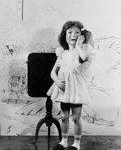I’m suffering jetlag from hopping from Canada to Europe so many times this month. It is impossible to resist following up on comments from readers on the other side of the globe…
I just got a note from Henk, a blogger in the Netherlands. He has an amazing blog, called Outsider Environments Europe http://outsider-environments.blogspot.com/. It has a comprehensive list of strange and wonderful outsider sites in Europe. He describes “an environment” as a relatively large-scale creative construct, related to and redefining the place of living of the maker”. Have a look at some of the photos and you will be packing your bags for a trek through these sites. This photo is the “Shelled Mountain” by French artist Joseph Duffour.
If you read my blogs about Canadian Maud Lewis’s painted house, you may have detected that I was writing about it from a sense of obligation, not passion. Compared to the remarkable outsider environments across Europe, Maud’s house is…well…boring. It’s why I would put Maud’s house into the folk art category. Her house is charming, but it lacks the scope and vision of many projects that are definitely “outsider”. (I know this will trigger a flurry of hate mail from ML fans. Bring it on. I would like someone to teach me how to appreciate folk art – and I am sincere about this.)
I am disappointed that I have a lively dialogue with readers in Europe and the United States, but not Canada. C’mon you guys. There must be some Canadian outsider art – environmental or otherwise – that you can tell me about. Are we really that dull north of the 49th?

 Whenever I bump into a likely suspect I ask, “Name some Canadian outsider artists.” After searching the sky for an answer, the only response I have ever gotten was “Maud Lewis”. Not a long list, but it’s a start. I have to confess that she was the only Canadian folk/outsider artist I knew when I started my research. In fact, I was more familiar with Maud’s painted house than her paintings.
Whenever I bump into a likely suspect I ask, “Name some Canadian outsider artists.” After searching the sky for an answer, the only response I have ever gotten was “Maud Lewis”. Not a long list, but it’s a start. I have to confess that she was the only Canadian folk/outsider artist I knew when I started my research. In fact, I was more familiar with Maud’s painted house than her paintings. Maud Dowley (1903 – 1970) lived in Nova Scotia her entire life. She was a loner (sound familiar?) because she was small and didn’t look like the other children. She developed rheumatoid arthritis in her childhood, which made all movement painfully difficult. She left school when she was 14, after completing grade 5. Her mother taught her to paint, and she began creating Christmas cards which she sold to family and friends.
Maud Dowley (1903 – 1970) lived in Nova Scotia her entire life. She was a loner (sound familiar?) because she was small and didn’t look like the other children. She developed rheumatoid arthritis in her childhood, which made all movement painfully difficult. She left school when she was 14, after completing grade 5. Her mother taught her to paint, and she began creating Christmas cards which she sold to family and friends.



 I know that Megan would enjoy sitting down for a tete-a-tete with Scottie Wilson if he were alive. Although I don’t think either of them would want to talk about their artwork, I suspect they would recognize a kindred spirit. I wonder what they would talk about? Maybe nothing at all.
I know that Megan would enjoy sitting down for a tete-a-tete with Scottie Wilson if he were alive. Although I don’t think either of them would want to talk about their artwork, I suspect they would recognize a kindred spirit. I wonder what they would talk about? Maybe nothing at all.